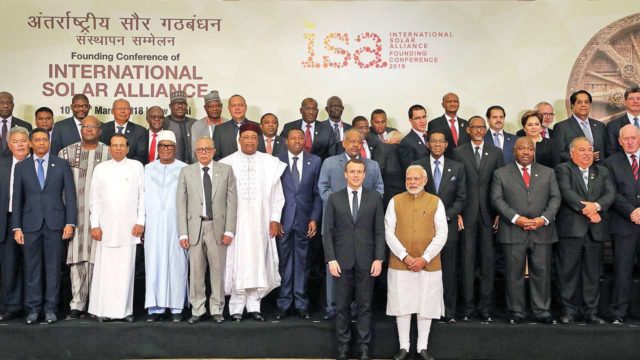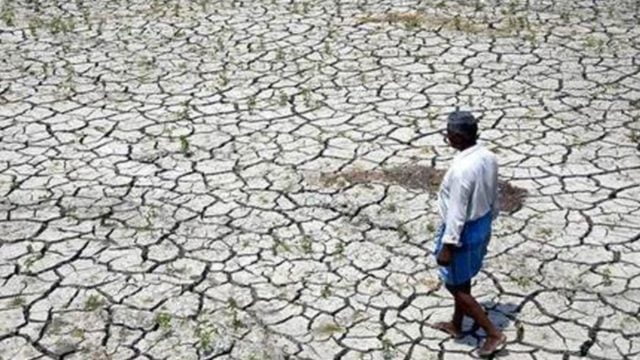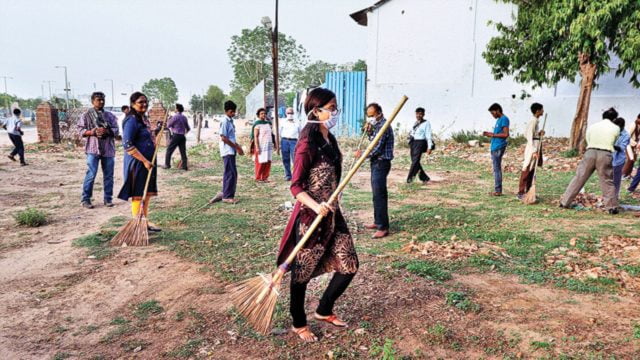BJP’s 2019 manifesto and other declarations
It is for the first time that climate change has featured in the manifestos of the two biggest national parties of India.
BJP did not only enlist its agenda but also stated what the government did in its previous term to deal with climate change. The party has made a promise of establishing 175 GW of renewable energy capacity and has claimed that it has already achieved 76.87 GW.
The BJP will provide the Himalayan states with ‘Green Bonus’ for forest conservation. It has also promised to work on the 102 most polluted cities in the country.

In the year 2018, GoI made various declarations including plastic ban and control on air pollution. It also entered into two international agreements- the rulebook to implement the Paris Agreement and the Kigali Amendment to the Montreal Protocol which came into effect from January 1, 2019.
Where do we stand?
In 2019 elections, there was a ‘no water, no votes’ campaign in two rural constituencies of Madhya Pradesh and Gujarat.
We have already witnessed climate change impacting vulnerable areas across the country, for example, Kerala floods last year and recent Chennai drought.

Global Assessment Report of the United Nations Office for Disaster Risk Reduction noted that countries like India will probably encounter economic losses if they do not start investing in eco-friendly infrastructures.
2019 WHO list of the 10 most polluted cities in the world includes 7 in India.
India’s plan
The goals in India’s NDCs are threefold:
- Reducing the emission-intensity of its gross domestic product (GDP) by 33%–35% by 2030
- Achieving 40% cumulative electric power installed capacity from non-fossil fuel-based energy resources by 2030
- Creating an additional carbon sink of 2.5–3 billion tonnes of CO2 equivalent by 2030 through additional forest and tree cover
The negatives
It is impossible for India to meet its target of carbon sequestration and afforestation. India’s sequestration from forests has worsened from 2010-14 levels as seen in Biennial Update Report (BUR), submitted on 31 December 2018 (UNFCCC 2018).
The technical body of UNFCCC has asked India to define ‘forest’ which has been mentioned in the BUR as it suspects that the definition of “forest cover” used by the Forest Survey of India is exaggeration as the distinction between native forests and man-made plantations is not separated.
India has continued the increase of coal fired power plants along with is carbon emissions.
The steps taken in positive direction
Indian has, evidently, upped its ranking in the Climate Change Performance Index 2019 by 3 places (Behl 2018).
The government has been working on policies regarding renewable energy capacity (to know one of its steps towards renewable energy policy, read Government Has Asked Uber And Ola To Convert 40% Of Their Cars Into Electric By April 2026).
Also, the market factors, for example, falling of renewable energy prices may help India to complete its NDC target of achieving 40% electric power installed capacity from non-fossil fuel based resources.
India can also be expected to achieve its NDCs goal of reducing greenhouse gas emission intensity (Sethi 2018b). The GoI is also planning on taking actions against states who have failed to ban plastics as per national level policy.

What should be done?
- Strengthen Swachh Bharat Mission: It has great potential and has reached corners. It only requires more scientific and legal actions
- Ban single-use plastics
- Implement the National Clear Air Programme: NCAP needs to strengthen legal mandate and support it with adequate financial and institutional resources
- National and State Action Plan on Climate Change: due to the federal nature of the country some states end up neglecting national level polices
- Implement National Action Plan on AMR: currently, antibiotic resistance is emerging as a major health threat and needs serious attention
- Right forest policy and action: The draft National Forest Policy, 2018 (NFP-2018) needs to be revised to focus on technical and core issues.
- Strong pollution control boards
- National River Revitalisation Plan: it is not only Ganga that is polluted (which the GoI has also failed to clean). Other rivers also need attention.
- Reduced use of class I pesticides
India immediately needs an all embracive policy with a vision that is consistent with scientific findings.
Proper definitions of concerned subjects are very crucial to have a fair and clear-cut data for public and government analysis. A well-made policy is the requirement of the hour to save India against a rapidly closing window of climate change.
Sources: India Today, DTE, DTE, EPW, EPW
Image credits: Google Images
Find the blogger at: @kumar_darshna
Must read:





























